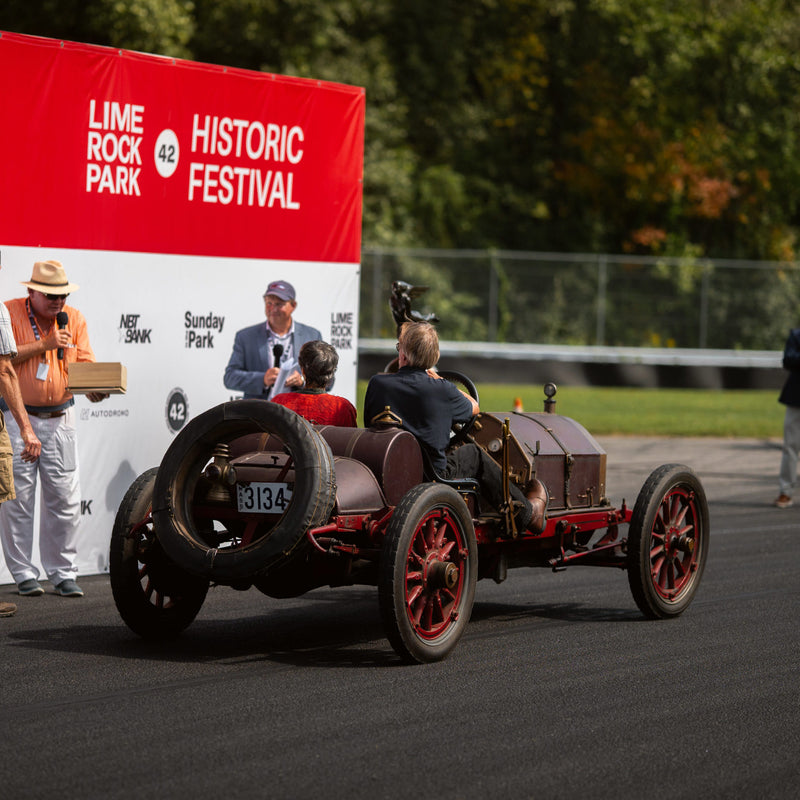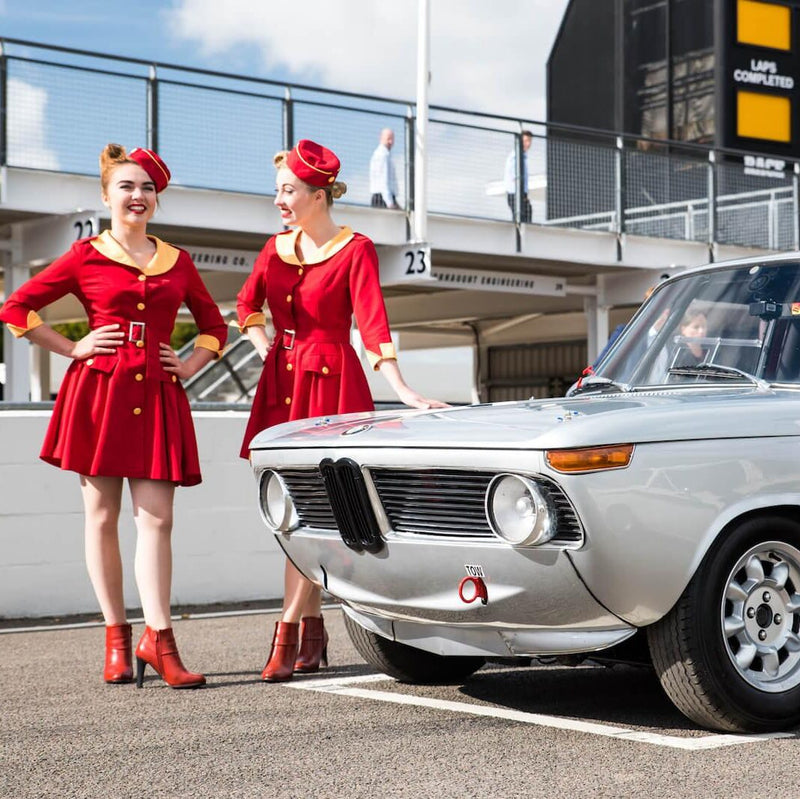Great mechanics aren’t born, they’re bred. Yes, you can have the good fortune to being the son or daughter of a talented wrench hand, but unless you’ve figured out some sort of Matrix-esque knowledge downloading machine, there is still no substitute for putting the time in and honing your craft the hard way. That’s what Ian Barkaway had done for decades under a string of other Ferrari shops until he had built a reputation that exceeded that of his employer’s. Lo and behold, with the right spark of capital from a trusting client, Ian struck out on his own to start Barkaways just outside of London, and the rest is Concours history.



Ted Gushue: Ian, how did Barkaways begin?
Ian Barkaway: It began when I was 15, 16. I left school and went under a car to follow my true passion.
TG: And which car was that?
IB: Actually, a Rolls-Royce. I did an apprenticeship with Rolls-Royce, and afterwards—there was a Ferrari garage up the road—I thought, "That looks more fun than Rolls-Royces.” So I went there, and I've been doing Ferraris ever since.
TG: What was that first Ferrari garage like?
IB: It was a small specialist shop, and it was back in the '80s, and we were doing restorations and service work. I went on to be the After Sales Manager within the dealer network.


TG: What did a restoration shop look like in the ‘80s?
IB: We were doing similar cars to today to be honest. 308s, Dinos, Daytonas, Boxers. We weren't going into the same depth of restoration that we do now though. You've probably seen that today the metal work is far more involved than it ever was back then.
The cars weren't that old then, so you could top and tail them and make them look nice a lot, lot easier than you can today. Today we're chopping chassis out, doing box sections, chassis sections, engines are far worse. So it's a much harder job. It's a different game today.
TG: Makes sense; as the age piles on, battling it only gets more complicated. On the topic of age, when did Barkaways incorporate?
IB: Barkaways incorporated five years ago. I spent 30 years working for all sorts of other people and was ultimately driven by the customers to start out on my own. Several of them said, "Look, Ian we need to come to you. Why can't we come to you directly?"




TG: That must be a decision that's very difficult for most people who work in that sort of world to go out on their own. When do you become yourself and not someone else?
IB: It's hard. Financially especially, it's a huge move. Now this is a big investment, it's ballsy, but I said to my wife more or less what three or four customers had said, "Why are you working for other people? We wannna just come to you." So we put together a business plan, we took the bull by the horns, and here we are!
TG: Just for my curiosity, when you launch a business like this, do you go to the bank for a loan, do you just lock in a year's worth of customers, how do you finance the beginning of something like this?
IB: We were financed. We were very fortunate, one of our clients helped us. And he just said, "Look, sort it out." What I've got do is pay him back, of course, but it’s going well.





TG: So what was the first car that won you an award?
IB: The first car we did here was a Lusso, which was displayed at Salon Privé, and then one of the other early really big cars we did was a California Spyder. The owner of the California saw the Lusso that we'd done, and he said, "I want my car to look like that.” So I got an email that came through saying as much, and I said, "Fine, no problem." "Oh by the way it's a California Spyder."
We rang the insurance company and the rest is history. That car went on to win Salon Privé outright. It went to Villa d'Este and won its class too. It was a spectacular start to the business.
TG: That’s certainly a good way to build a track record. What were some of the cars that have stood out to you that you've worked on since then?
IB: Since then we've done a very nice short wheelbase, we did two more Lussos, a Daytona plexiglass. The Daytona was one of the first right hand drive ones—really good to do one of those. We did a very nice 330 GTC in it's original green too. So yeah, we've been fortunate to have some very nice cars to work on.

TG: Tell me about the TDF that’s in your garage now.
IB: The TDF was a milestone car for us. That came in, and half the world would have said, "Leave it as is." This car's been raced extensively, all through its life. There are period shots of it going around Spa on black and white film. It was very tatty, the aluminum was very oxidized. Like I said, half the world would have said, "Leave it as it is" and the other half would say, "It needs sorting out.” It only matters what one person wants though, and the owner said, "Let's sort it out."
It was a bit frosty in places, and had started oxidizing pretty badly in some spots, so we peeled the entire body off that car, went right back to scratch. Probably 90% of the car is still original, and again, it arrived on the concourse lawn, where it mopped up. It won its class outright. So it was a spectacular restoration job to be involved with. It’s a privilege to be involved with cars of that historic value.
TG: What's it like to drive?
IB: It's fantastic. When I first drove that car, I wouldn't say I was disappointed, but I went up the road when it first came in, and I was waiting for the sort of big V12 emotional feeling to hit, and it just didn't. Now it’s spectacular though—the engine’s been properly sorted, and it doesn't disappoint. The noise that car makes is what everyone else is trying to manufacture now with active exhausts and flaps and what have you. That's the noise they're trying to replicate. It is spectacular.
TG: How long was the restoration process on that one?
IB: It took us about three years—it was a long process. Now it's all classic certified and everything.




TG: Speaking of, how do you interface with Ferrari Classiche?
IB: We do do a lot of work with them because obviously with everything we do, it's vital that it's original. And if someone's going to invest millions of pounds in an object, it's got to be the real deal. If you want to buy a Picasso, you want it to be authenticated, to make sure you’re getting the real painting. So if you're gonna to buy a car, it's got to be the right one too, it’s the same thing.
We spend a lot of time researching numbers and what have you. There is a link to Ferrari through the UK; Tony Willis has been doing it for the past, roughly, five or six years. So we've done a lot through them. We've been down to visit them, we know all the guys down there, so it's vital that you get the right information.



TG: Of course. Is there anything else you'd like our readers to know about?
IB: We're here for the cars; for the cars and the owners. We're here to help you enjoy your car. That's our, sort of, mission statement if you will. Whether it's a routine service or an oil filter or an entire restoration. We want you to go out and be able to enjoy your cars. So we'll come and support you on concourse lawns, support you on rallies, because you are going to need a bit of a hand in these things most likely. They are fragile cars, they do break. You put them away one minute, and you get them out the next minute and something's failed on them in that downtime.
You are going to need someone behind you to support you if you actually drive these cars. And it's the reassurance the customers get from our support, that they're not on their own, that if anything happens, we're gonna be there to help them mop it up. And that really works for our clients.
TG: Who else do you look at in the space whose work you admire?
IB: There are a few really good guys out there, I mean we work very closely with JD Classics and the people over there—they do a lot of very good stuff. Mark and the boys over at GTO, we do work with them too, we buy parts from them, and they're re-manufacturing a lot of parts. Parts supply's very hard for these cars, so we work with them and buy parts and everyone benefits. They’re both shops that we look to for collaboration and inspiration, because we’re in this for the same good reasons and we all want to produce the best work we can.




















































